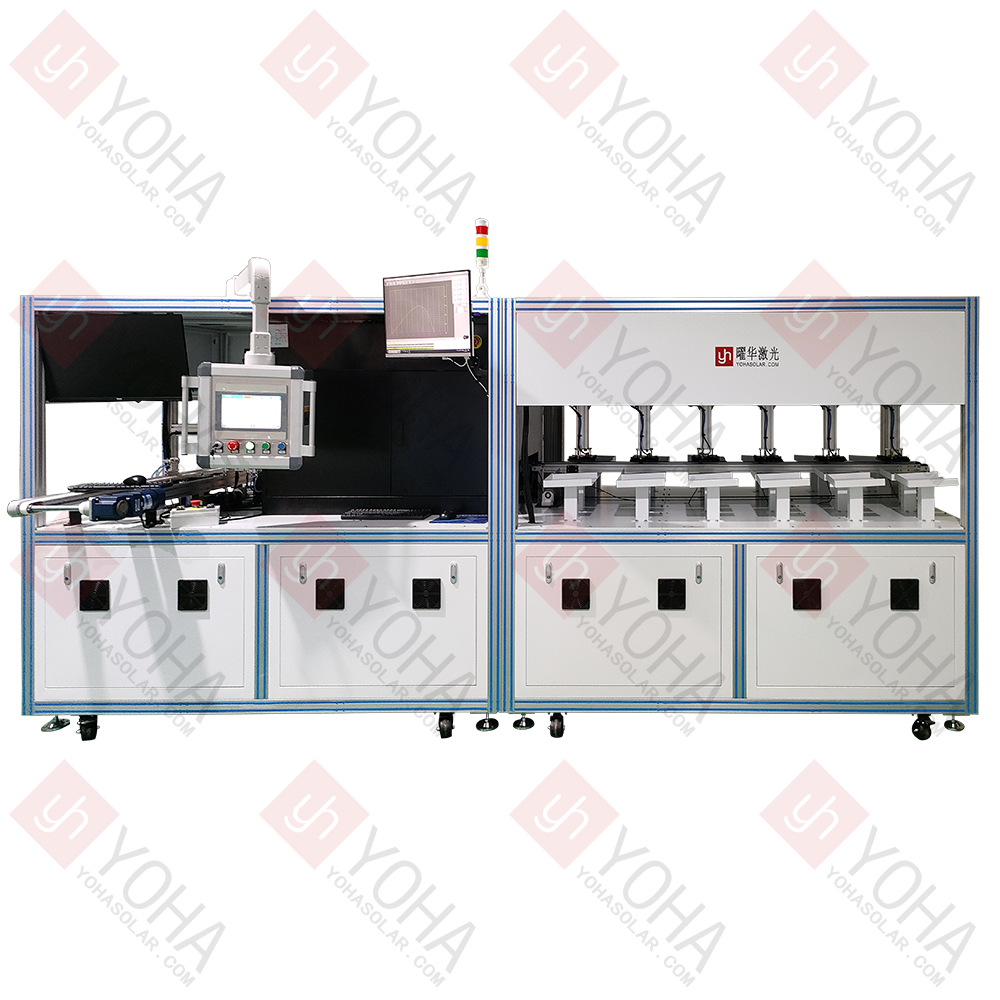Welcome to Wuhan Yoha Solar Technology Co., Ltd!
common problem
Site Map
Language:
 Chinese
Chinese
 English
English
Welcome to Wuhan Yoha Solar Technology Co., Ltd!
common problem
Site Map
Language:
 Chinese
Chinese
 English
English
In today's booming photovoltaic industry, a scientifically designed 50MW manual PV module production line with precise equipment selection plays an indispensable role, whether for specific market segments, scientific research and teaching, or flexible small-batch, multi-specification production. Unlike fully automatic lines that pursue ultimate efficiency, manual lines emphasize equipment reliability, operational convenience, and overall cost-effectiveness. The key to their success lies in a profound understanding and rational configuration of the equipment for each core process. This article will systematically analyze the core equipment required for building such a production line.
I. Line Start and Quality Cornerstone: Cell Handling and Stringing
The beginning of the production line determines the smoothness of subsequent processes and the initial quality of the finished product.
Cell Sorter: This is the first checkpoint for quality control. For a manual line, a precise EL (Electroluminescence)+IV tester and sorter is a wise choice. It can not only sort cells based on electrical parameters but also visually detect internal defects like micro-cracks, fragments, and efficiency inconsistencies through EL imaging. Precise sorting is a prerequisite for ensuring consistent performance of cells within the same module, thereby improving overall output power and yield.

Laser Scribing Machine: To adapt to diverse module layout designs, whole cells often need to be cut. A stable laser scribing machine is crucial. It uses high-precision lasers for clean, efficient, and low-stress cutting, minimizing mechanical stress and micro-crack generation, providing intact "raw material" for subsequent soldering.
Stringer: This is a key piece of equipment for improving efficiency in a manual production line. Although defined as a "manual line," introducing a semi-automatic stringer is common and efficient. It automatically positions tabbing ribbons precisely on the cell busbars and completes soldering through a heating system to form cell strings. This greatly improves soldering consistency and efficiency, avoiding common issues in manual soldering like poor soldering or oversoldering, ensuring uniform series resistance.
II. Core of Module Formation: Lamination and Pre-Lamination Processes
Once the cell strings are ready, the process moves to the critical stage of encapsulating the cell circuit into a durable module.
Layup Station: This is the core area for manual operation. A well-designed layup station typically features a flat stainless steel or granite surface with precise positioning guides and a vacuum adsorption system. Operators sequentially lay the backsheet, EVA film, interconnected cell strings, top EVA film, and glass here, completing the module "stack." Vacuum adsorption effectively secures the layers, preventing shifting during handling and ensuring stacking accuracy.
Laminator: This is the "heart" of the module production line, whose performance directly determines the encapsulation quality and service life of the module. For a 50MW capacity, a laminator with a chamber size suitable for common module specifications should be selected. It works by applying heat and pressure under a vacuum environment, causing the EVA film to melt, flow, and cross-link, firmly bonding the cells, glass, and backsheet into a monolithic structure while removing internal air bubbles. Key selection criteria include temperature control accuracy, vacuum level, pressure uniformity, and operational stability, ensuring optimal encapsulation for every module, resulting in excellent weather resistance and insulation.
EL Tester: An essential quality inspection device, used after lamination (and optionally before lamination). By applying current and capturing the electroluminescence image, it clearly reveals internal defects such as micro-cracks, broken fingers, poor soldering, or fragments that may have occurred in previous processes. This is a core diagnostic tool for ensuring the internal quality of outgoing modules.
III. Final Shaping and Performance Verification: Post-Lamination Processing and Testing
The encapsulated module requires final processing to become a finished product.
Edge Trimmer and Framing Machine: Excess EVA from the edges of the laminated module needs removal by an edge trimmer. Subsequently, the module proceeds to framing. Manual framing machines typically use hydraulic or pneumatic systems to assist operators in precisely clamping the aluminum frame onto the module edges and securing it. The stability and ease of use of this equipment directly affect the firmness and aesthetics of the frame installation.
Glue Dispenser / Sealant Applicator: Before installing the frame, silicone sealant needs to be injected into the frame channel or a sealant gasket applied to achieve edge sealing and moisture prevention. A glue dispenser with accurate metering or an easy-to-use applicator effectively ensures the long-term sealing performance of the module, preventing moisture ingress.
Junction Box Installation and Curing Equipment: The junction box is the hub for the module's power output. This typically requires a junction box soldering machine or application tools to reliably connect the diodes inside the box to the module's busbar ribbons, and firmly attach it to the backsheet using silicone or tape. A curing rack or tunnel oven might be needed subsequently for thermal curing to ensure the adhesion strength and sealing of the junction box.
IV Tester: This is the final judge for verifying the module's performance. The IV tester simulates Standard Test Conditions to accurately measure key electrical parameters like peak power, current and voltage at maximum power point, open-circuit voltage, short-circuit current, and fill factor, and sorts the modules accordingly. For a 50MW line, equipping a high-precision, stable IV tester is fundamental for ensuring accurate power rating and maintaining brand reputation.
Conclusion: Systematic Thinking is Key
In summary, a 50MW manual PV module production line is an organic system composed of a series of precise equipment for sorting, scribing, stringing, layup, lamination, and testing. Equipment selection should not be a simple assembly of parts, but should be based on a deep understanding of the production流程, aiming for capacity matching, process compatibility, and operational smoothness between different equipment. Within the budget, prioritizing the performance and reliability of core quality-critical equipment like the laminator, EL tester, and IV tester is crucial for a successful investment. Through scientific selection and configuration, such a manual production line is fully capable of producing high-quality, stable-performance PV modules, creating significant value in specific market segments.
TOP
18086473422
MESSAGE
